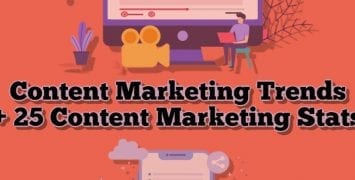Looks matter online. Every page on your web site should be created with an eye towards aesthetics and style.
But design is about more than just the colors and logos on your website. In the words of Steve Jobs, “design is how it works.”
Let’s take a look at how website design can help increase traffic, brand awareness and even conversions!
Is a Picture Worth a Thousand Words?
Images help spice up blocks of content. You want to add at least one image to just about every blog post. Plus, you’ll want to add images throughout your site on the home pages, products pages and more.
According to design expert Mary Stribley, there are five types of images which can be used on a website. They are:
Photos
People, products and more. Photos are the most commonly used type of images online.
Charts
A colorful, organized chart is a great way to clearly convey complex data and trends.
Visual Representations
These are instructional illustrations such as “how to make a paper airplane” or perform some other physical action.
Comics
Often fun and humorous, comics are a great way to grab attention. The comic format works for a wide variety of topics – even more serious issues.
Annotated Screenshots
Adding text to screenshots works well when creating tutorials or other teaching materials. Annotating lets users see real-world examples while also letting you include helpful tidbits.
The Dangers of Too Many Images
You have a lot of options regarding images. But be careful. Sites with too many images look busy, confusing and downright muddled.
Every web page should have a single, clear purpose. Your images should support the main idea. Avoid images which don’t connect to theme of the content. Instead, the image should reinforce the main idea.
Avoid Giant, High-Resolution Images
You want the images to be clear and readable on both desktop and mobile. But don’t go overboard. High-resolution images can dramatically slow your site’s loading times.
According to Google, you want your site to load in under seven seconds. Ideally, a site should load in three seconds or less.
Images are one of the biggest speed bumps on the road to a fast loading site. You want to make sure images aren’t slowing down your site.
Two useful tools here are Google’s Test My Site and SEOCrawler’s Site Auditor. Both provide in-depth reports on site speed, including info on what specifically might be slowing your site down.
Personalize Your Images
There’s nothing wrong with stock photos. Stock photos are often an inexpensive and easy way to add images to your site.
CreativeCommons.org is a great source of high quality, free images which you can use for commercial purposes.
But you don’t want to use stock photos exclusively. Most businesses benefit from a few original photos, too. Fortunately, you don’t have to be an expert photographer to add some quality original images to your site.
Try adding a photo of yourself and your staff to your site’s About Us page. People don’t necessarily connect with brands but they do connect with other people. Photos help show the real people behind the brand.
Design is About More than Just Looks
While a great looking website is important, design should always primarily focus on function. You want your pages clear and easy to navigate. When someone first lands on a page, they should have an instant understanding of what that page is all about.
How do you use design to improve the functionality of your web pages? Comment with your design tips and feel free to ask any questions!




